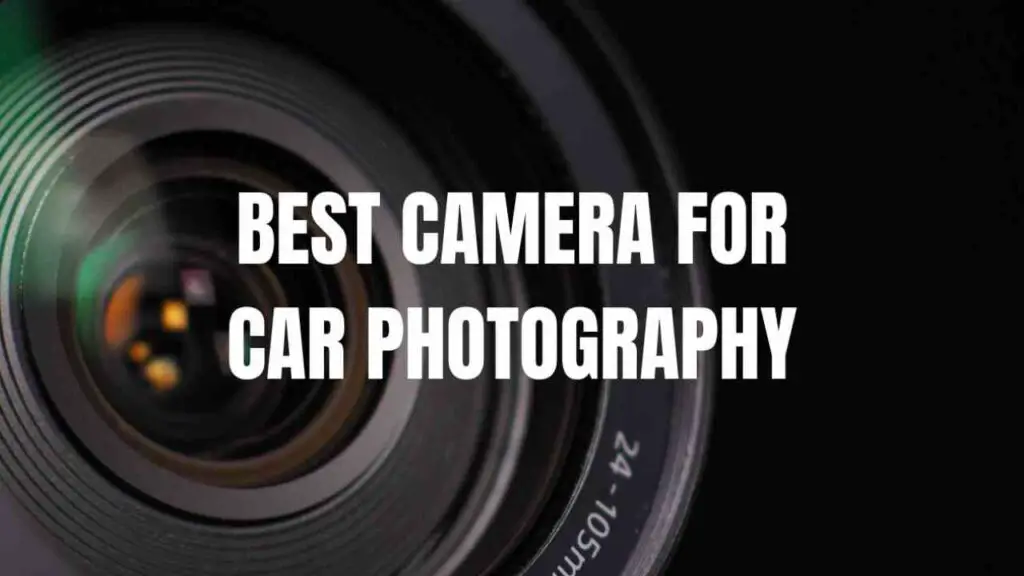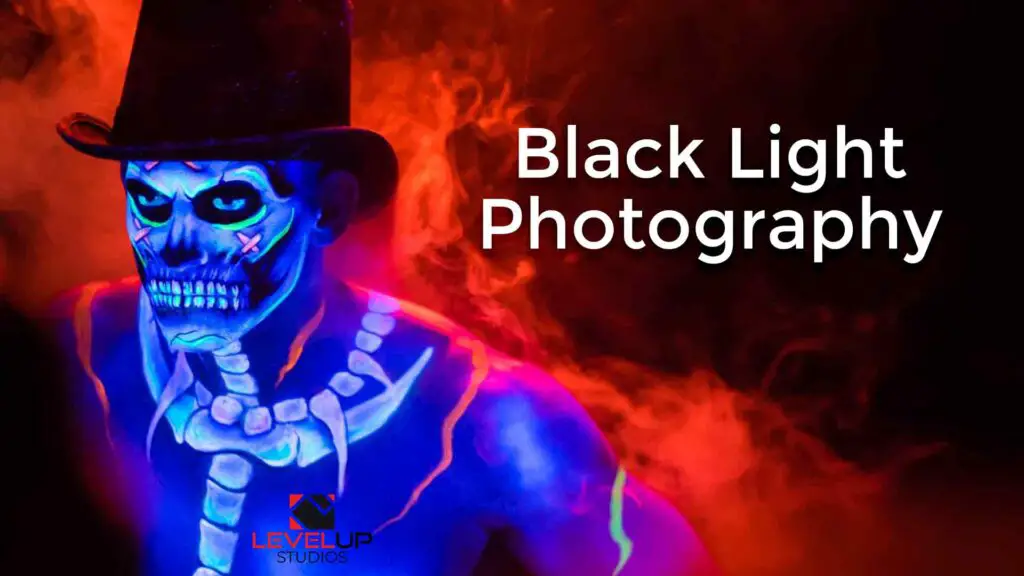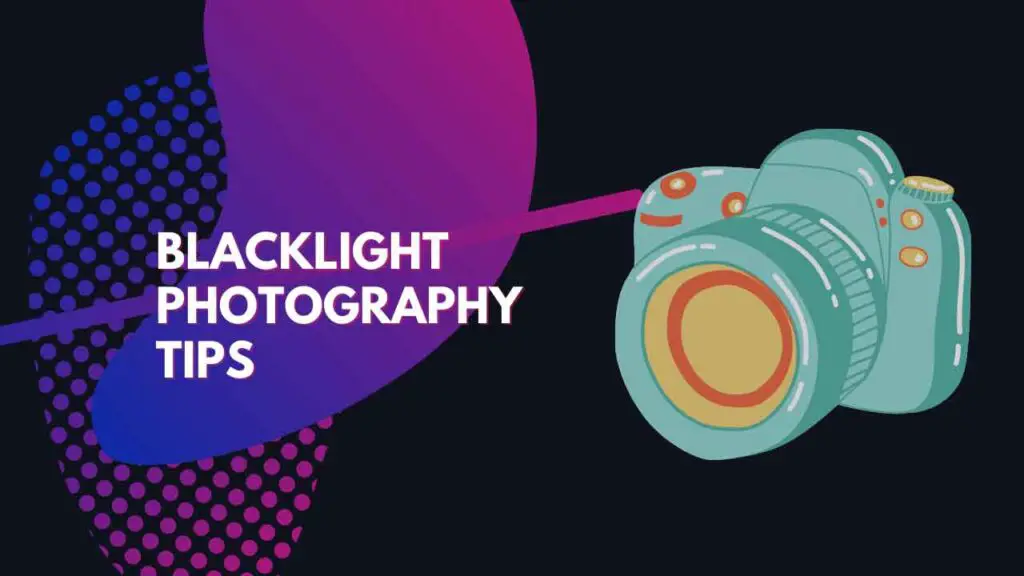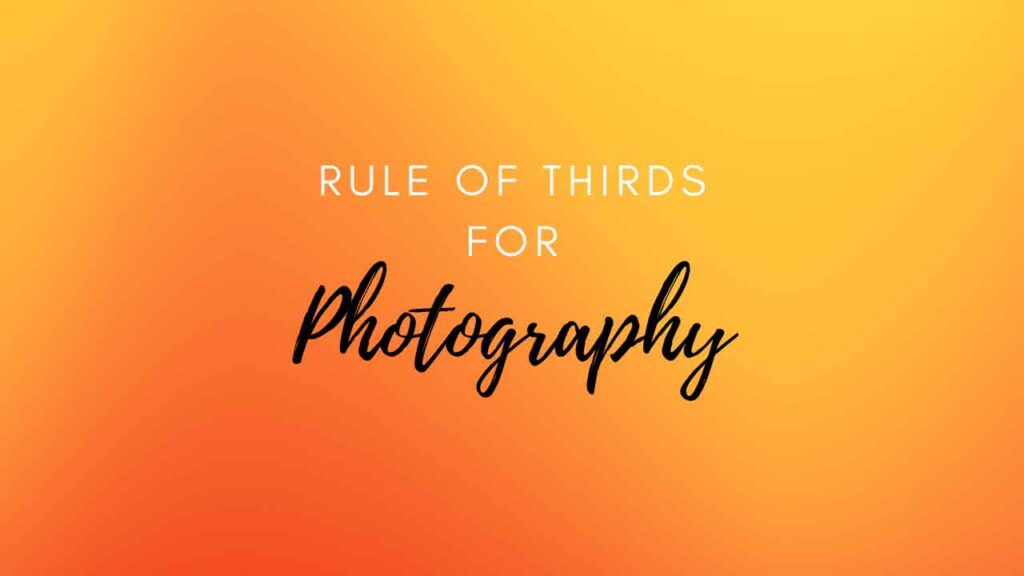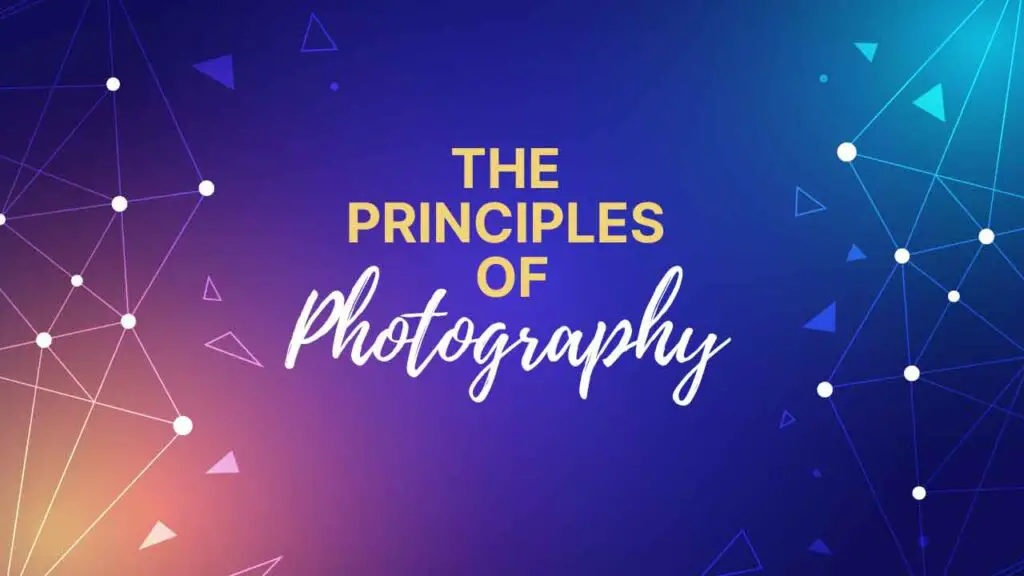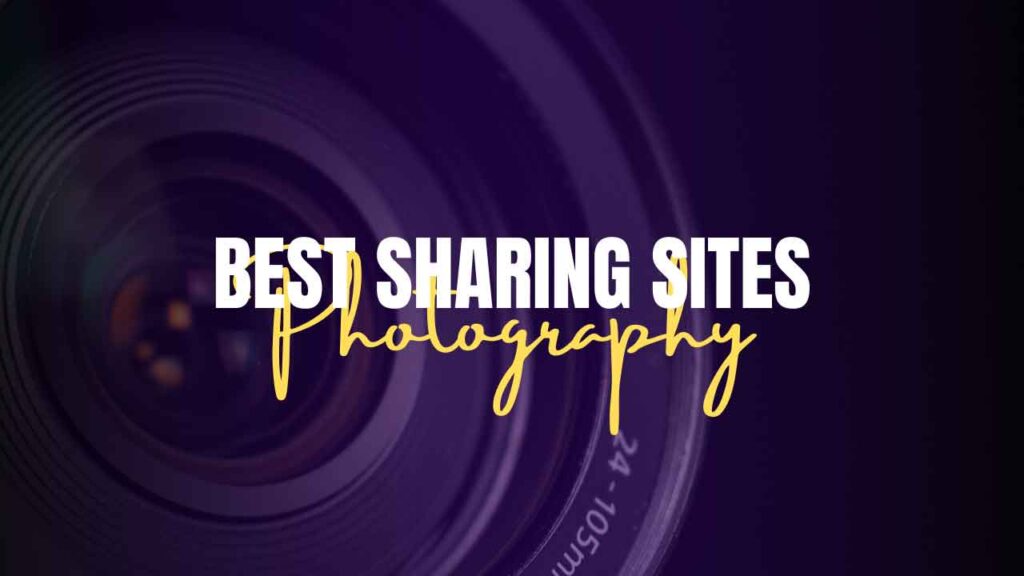THIS ARTICLE MAY CONTAIN AFFILIATE MARKETING LINKS! IN CASE YOU MAKE A PURCHASE THROUGH ONE OF THE LINKS, WE'LL GET A SMALL COMMISSION. WITH NO EXTRA CHARGES TO YOU. THANKS!!
Car photography forms a dazzling fusion of automobile sophistication with visual artistry, rendering it an enticing niche for many professional and hobbyist photographers. Mastering this domain not only requires a grasp of usual photography principles like framing, light management, and regulation of camera settings, but also necessitates an understanding of the specific complexities that car photography introduces. This article ranges from the quintessential photography techniques employed in the car photography realm, such as panning, tracking shots and the centrality of the golden hours, to the fundamental influence of a superb camera. The best camera for car photography is one that combines an optimal sensor size, resolution, effective shutter speed, wide ISO range, and excellent autofocus performance. This guide aims to equip you with crucial knowledge on the best camera models tailor-made for car photography, critical accessories, and practical tips.
Best Camera for Car Photography
Understanding Car Photography
Car photography revolves around capturing images of automobiles in visually appealing and artistic ways. It is a unique branch of photography that requires a symbiotic blend of technical knowhow, creativity, and of course, a profound appreciation of cars. The importance of the right camera in car photography cannot be understated, as it dictates the quality of the resulting images. A good camera should provide high resolution, powerful zoom, stellar low-light performance and fast, precise autofocus that can impeccably capture the beauty and detail of the automobiles being photographed.
Photography Techniques for Car Photography
Certain photography techniques are commonly applied in car photography to achieve stunning results. Understanding and mastering these techniques is vital for professional-quality car images.
- Panning is a popular technique, where the camera is moved horizontally to keep a moving car in focus while the background appears blurred. This technique showcases the motion and speed of the car, resulting in dynamic, striking images.
- Tracking shots, a form of panning, involve using another moving vehicle to photograph a moving car. This method provides more control over the shot and can create a vivid, high-paced sense of motion.
- The golden hours of shooting, typically the first hour after sunrise and the last hour before sunset, offer optimal lighting conditions for dramatic and evocative car photography. The soft, golden light during these hours helps in accentuating the colors and the shape of the car.
Discovering the Best Camera for Car Photography
When delving into the world of car photography, it becomes essential to select a camera that aligns with your creative needs and technical expertise. Industry stalwarts such as Canon, Nikon, and Sony have developed top-tier models such as the Canon EOS 5D Mark IV, Nikon D850, and Sony Alpha A7 III, designed to deliver unparalleled image quality and superior camera performance for car photography.
The EOS 5D Mark IV from Canon utilizes a 30.4 Megapixel full-frame sensor, delivering a high degree of detail and vibrant colors, perfect for accentuating the sleek designs and striking contrasts in car photography.
Armed with a massive 45.7 Megapixels, the Nikon D850 ensures extreme detail and crispness in every shot. Its fast autofocus system and superior low-light capabilities are well-equipped for high-speed shots and dusky hour photography, capturing every moment vividly.
Similarly, the Sony Alpha A7 III, with its impressive 24.2 Megapixel full-frame sensor offers a well-rounded package. Delivering quick autofocus, stunning resolution, and well-balanced lighting and color reproduction, this model facilitates the vivid capture of moving cars.
Ultimately, the camera choice should be dictated by your specific needs, allotted budget, and proficiency in car photography. It’s worth remembering that a clear understanding of car photography’s subtleties and a mastery of its techniques are as important as owning a superior-grade camera to achieve stunning results.

Features to Look for in a Camera for Car Photography
Understanding Sensor Size and Resolution
When considering a camera for car photography, pay careful attention to the sensor size, a crucial aspect that significantly influences the final image quality. The sensor is the camera component responsible for capturing light from your subject. Cameras with larger sensors can amass more light, which translates into crisper, more beautifully detailed images. A larger field of view is another advantage offered by a significant sensor, particularly helpful when photographing expansive subjects like cars. Further, larger sensors generally deliver superior performance under low-light conditions, which can prove conducive when shooting car interiors or during twilight photography sessions.
In association with sensor size, resolution too plays a pivotal role. The resolution, indicated by the number of megapixels a camera possesses, determines the level of detail the camera can capture. High-resolution cameras, typically those featuring more than 20 megapixels, can accurately capture minute details, an advantage when the desire is to emphasize specific attributes of a car in the photographs.
Shutter Speed and ISO Range
Quick moving objects, like cars, require a fast shutter speed to capture sharp, blur-free photos. Therefore, it’s crucial to look for a camera with a broad range of shutter speeds, especially on the faster end. This will allow you to freeze the action when you need to, whether it’s a speeding race car or a spinning wheel.
The ISO range of a camera is also vital. ISO determines how sensitive the camera’s sensor is to light. A camera with a wide ISO range will give you more flexibility in different lighting conditions. Lower ISO settings are ideal for bright, outdoor shoots, while higher ISO settings are useful in darker conditions. However, it’s important to note that higher ISO settings could add more noise or grain to your images.
Autofocus Performance
Autofocus (AF) performance is critical for car photography. When shooting moving vehicles, you need a camera that can quickly and accurately focus on the subject. Look for cameras that have advanced AF systems with multiple focus points. Many modern cameras also feature tracking autofocus systems, which are extremely useful for keeping your focus locked on moving cars. The best cameras for car photography also have fast processors, which ensures the AF system can keep up with fast-moving subjects.
Additional Features
Depending on your specific needs, you may want to look for cameras that offer video capabilities, have weather sealing for outdoor shoots, or include built-in WiFi for easy photo sharing. It’s also worth considering the type of lenses you can use with the camera, as different lenses can impact the overall look and feel of your car photos. You may want to have the flexibility of wide-angle lenses for capturing an entire car, along with telephoto lenses for focusing on specific car features or capturing cars in motion from a distance.
Summary
When you’re on the lookout for the optimum camera to specialise in car photography, you should be paying close attention to several key features. Sensor size, resolution, shutter speed, the ISO range, in addition to the autofocus performance, all significantly influence the caliber and the intricacy of your images. It’s also worthwhile to opt for cameras with additional qualities, tailored specifically to cater to your unique needs in car photography.

Top Camera Models for Car Photography
Best Camera for Car Photography
Canon EOS 5D Mark IV
One of the top recommendations for car photography is the Canon EOS 5D Mark IV. This camera is revered for its consistent good performance, even under low-light conditions, and features a 30.4-megapixel full-frame sensor proffering superior detailed captures. It also provides a 7 fps shooting rate ideal for catching high-speed action, a 61-point AF system ensuring a precise focus, and an added bonus of 4K video recording capability. Although investing in this camera might be heavy on your pocket due to its expensive price tag, its popularity among professional car photographers makes it worth considering.
Nikon D850
Another top contender is the Nikon D850, renowned for its high resolution and versatile features. Offering a 45.7-megapixel sensor and an impressive ISO range of 64 – 25,600, the D850 captures cars in crisp, vibrant detail whether in a dark garage or under bright sunlight. It also has 7 fps shooting, and an advanced focus system with up to 153 focus points, 99 cross-type sensors. Plus, the body is weather-sealed, making it a reliable choice for outdoor shoots.
Sony Alpha A7R III
For panoramic shots of cars set in vast landscapes, there’s the Sony Alpha A7R III. With an incredible 42.4-megapixel sensor, it provides high-resolution, wide-area coverage, allowing photographers to capture entire scenes without losing detail on the car. The A7R III supports 10 fps shooting and has a 399-point AF system. It has a strong dynamic range and is adept at managing light, especially against contrasty backdrops.
Canon EOS Rebel T7i
For those with a tighter budget but still want premium quality photos, the Canon EOS Rebel T7i is the spacecraft to board. Though classified as an entry-level DSLR, it packs impressive specs such as a 24.2-megapixel APS-C sensor, 6 fps shooting, and a 45-point all cross-type AF system. It even has a Feature Assistant function, which guides beginners through different settings and modes, making it a great learning tool for amateur car photographers.
Nikon D5600
Equally affordable yet powerful is the Nikon D5600. This DSLR features a 24.2-megapixel DX-format sensor and a wide ISO range of 100 – 25,600, thus promising excellent image quality even in less than ideal lighting conditions. It possesses a 39-point AF system, 5 fps shooting, and a system for sharing photos on-the-go, perfect for car bloggers or enthusiasts sharing their snaps online.
Sony Alpha a6000
Last but not least, the Sony Alpha a6000 serves both professionals and enthusiasts with its advanced features and lower price point. It has a 24.3-megapixel APS-C sensor, 11 fps shooting, and a lightning-fast 0.06-second AF speed thanks to its 179-point AF system. Recognized for its amazing speed and performance, this compact system camera lets car photographers capture fast action with precision.
When considering the best camera for car photography, it’s essential to factor in your unique requirements, budget, and preferred style of photography. The following top-tier models provide excellent anchor points for your search and deliver exceptional results under various conditions.
- What is Value in Photography?
- Some Most used Techniques in Photography
- Photography or Graphic Design
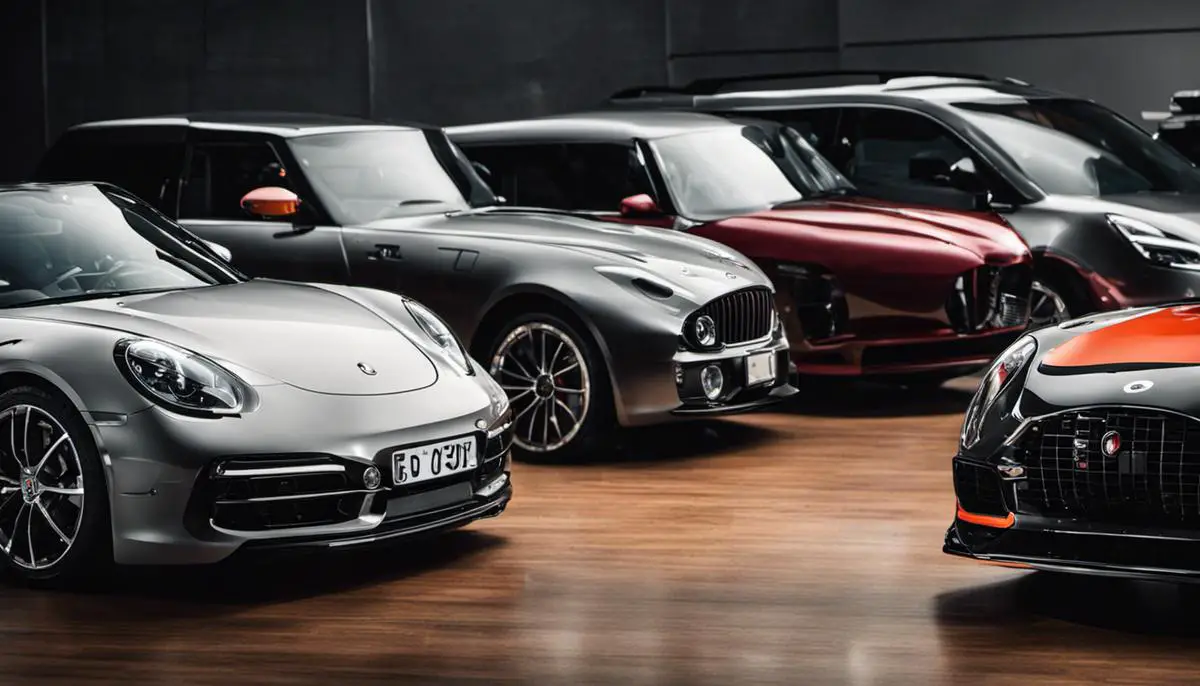
Useful Accessories for Car Photography
Pursuing Sharpness with Tripods
In the realm of car photography, the role of a tripod cannot be overstated. Its stability significantly amplifies your images’ quality, ensuring they remain steady and properly aligned, thereby minimizing the chances of producing blurred or crooked shots. This aspect is especially critical for obtaining detailed and bright photos in low-light scenarios or long-exposure shots. Numerous tripods offer superior support and ease of installation, with models such as the Manfrotto Befree Advanced Travel Tripod providing stellar, professional-grade stabilization.
Filters for Clarity and Light Control
Polarizing and Neutral Density (ND) filters are indispensable tools for automotive photographers, known to enhance picture quality dramatically. A polarizing filter helps remove unwanted reflections from the car’s surface, giving an exceptional depth of color and clarity to the image. The Hoya Polarizer Filter is a popular choice among car photographers. An ND filter, on the other hand, allows for longer exposure times by reducing the amount of light that enters the lens, thereby creating a sense of motion in the background while keeping the car sharply in focus. ND filters like the Lee Filters ProGlass IRND are a good choice.
Remote Shutter for Precision Timing
A remote shutter is another accessory that car photographers favor. This device allows you to take a photo without any physical contact with the camera, reducing the risk of camera shake and ensuring sharp, blur-free shots. It can also enable you to capture the perfect shot at just the right moment—be it an action shot of a moving car or the exact moment the car’s headlights come on. The Canon RC-6 Wireless Remote Control is a simple remote shutter that’s compatible with many Canon DSLR cameras.
Lens Selection for Various Shots
The choice of lens can make or break your car photography. A wide-angle lens is great for capturing the entire car in its surroundings, especially in tight spaces. The Canon 16-35mm f/2.8L is an excellent wide-angle lens that delivers top-notch image quality. A zoom lens, on the other hand, provides versatility, allowing you to zoom in for detailed close-ups of specific car details or zoom out for a wider perspective. The Nikon AF-S DX NIKKOR 18-200mm f/3.5-5.6G performs well as a zoom lens, offering a broad zoom range, sharp image quality, and efficient image stabilization.
Finding the Perfect Camera for Capturing Cars
The task of choosing just the right camera for car photography can seem daunting due to the range of factors at play. Issues such as image quality, sensor size, and the performance of the autofocus are all key considerations. Renowned models like the Canon EOS 5D Mark IV or the Nikon D850 are stellar options due to their full-frame sensors, exceptional image quality, and swift autofocus. But remember to enhance your results further with the right add-ons. Combining excellent equipment with your creative flair and a sharp eye for detail will set you on the path of capturing truly spectacular car photos, proving the old adage that the best camera is the one in your hands.
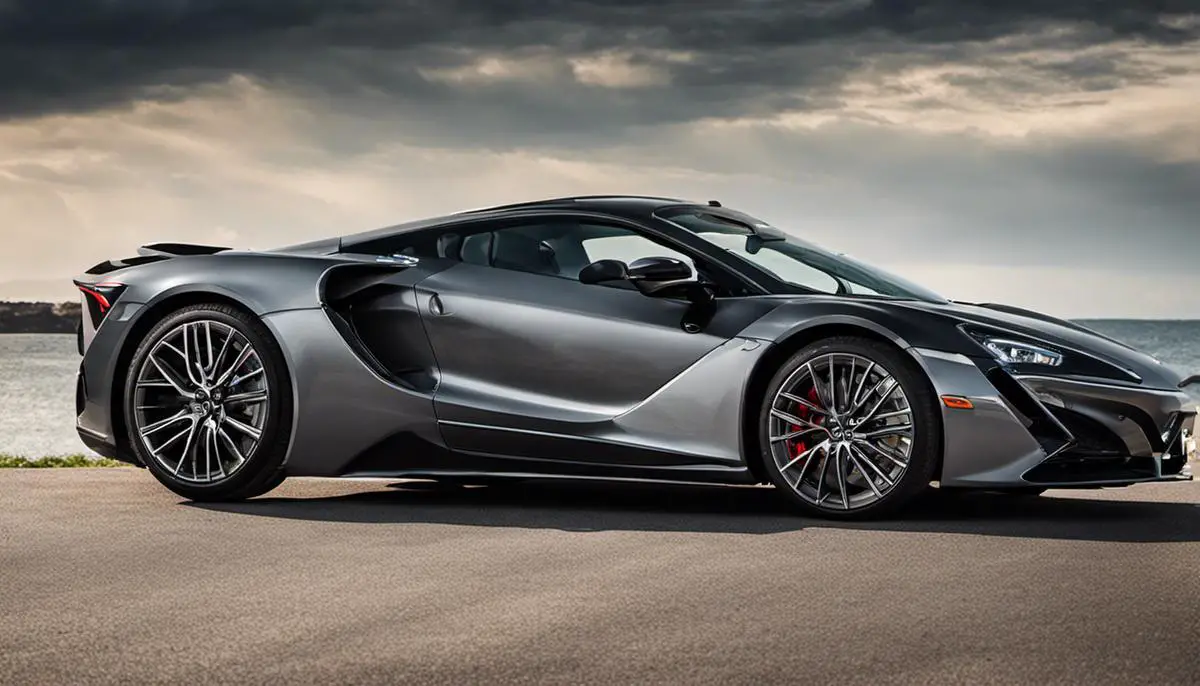
Practical Photography Tips for Car Enthusiasts
The Path to Choosing Your Ideal Camera for Car Photography
The field of car photography can quickly feel intricate, with the appearance of every minute detail of your automobile subject hanging on the performance of your chosen camera. If you’re just learning the ropes, consider the Canon EOS Rebel T7i. Not only is it renowned for its all-rounder features, but it also comes with a 24.2-megapixel APS-C CMOS sensor, capable of both high-resolution still photography and Full HD video capture. With this camera, you can easily create detailed images of cars, making it a go-to for novice auto enthusiasts.
For more established photographers needing a higher-end model, the Nikon D850 stands out for its impressive resolution – a whopping 45.7 megapixels – and capacity to capture 4K UHD video. This makes it an ideal choice for those who take large-format car photography seriously. Plus, its superior dynamic range aids in capturing the depth and texture of the car’s finish, bringing out intricacies otherwise unseen in its design.
The Importance of the Right Lens in Car Photography
After you have picked the camera, the next step is selecting the appropriate lens. Lenses can significantly impact the outcome of your car photography. A wide-angle lens, like the Nikkor 14-24mm f2.8, provides an exaggerated perspective which is often ideal for capturing the entirety of the vehicle in a single frame. Details of the car’s design can be highlighted using a macro lens. Shooting the tires, lights or grille is amplified with something like a Sigma 105mm f2.8 macro lens.
Setting Up the Perfect Car Shot
Properly setting up the shot is vital in car photography. Explore different angles and perspectives. Try taking shots from a low angle to give the car a dominant, imposing look. Capture the car from the front, side and back; each angle will highlight different aspects of the car’s design. The use of a tripod like the Manfrotto Befree Advanced can provide stability and allow you to experiment with different positions and angles easily.
Outdoor and Indoor Car Photography
Different settings can highlight different aspects of the car. Outdoor photography offers natural lighting and the possibility of contrasting the mechanical, hard lines of a car with the organic shapes of nature. Cameras with good dynamic range like Sony a7R III outshine in outdoor car photography.
Indoor car photography requires good artificial lighting. A camera with solid low-light performance like the Canon EOS 5D Mark IV can get you those high-fidelity shots even in dim conditions. Always remember to ensure the car is clean and polished; every detail matters in these close-up indoor shots.
Post-Processing Your Car Photographs
After capturing the shots, post-processing is where you can truly make your car photos shine. A good software suite like Adobe Lightroom can tremendously enhance your images. Adjusting exposure, contrast, and color balance can help emphasize the beauty of the car. Manipulating the background to compliment the car can also greatly improve the overall image. Always remember to keep your editing subtle, maintaining the integrity of the car and the image.
In conclusion
capturing striking car photos requires the right camera, the appropriate lens, and understanding the techniques to set up the shot. Following these tips can help you on your journey to becoming a skilled car photographer.

Moving from just being a car enthusiast to a proficient car photographer is a rewarding journey. With the perfect camera and the proper accessories, your car photography will go beyond mere glossy photos to unfold enchanting stories of speed and style. Such transformation requires understanding the intricate dynamics of camera settings, light manipulations, and the shots’ composition. While this guide embellishes your understanding of top camera models for car photography, essential features to look for, valuable accessories, and the best practices, the true mastery of the field fundamentally relies on ceaseless practice and creativity. The essence of photography, after all, lies in capturing an ordinary moment and framing it in such a way that it turns into an extraordinary tale, never failing to evoke awe and admiration.
